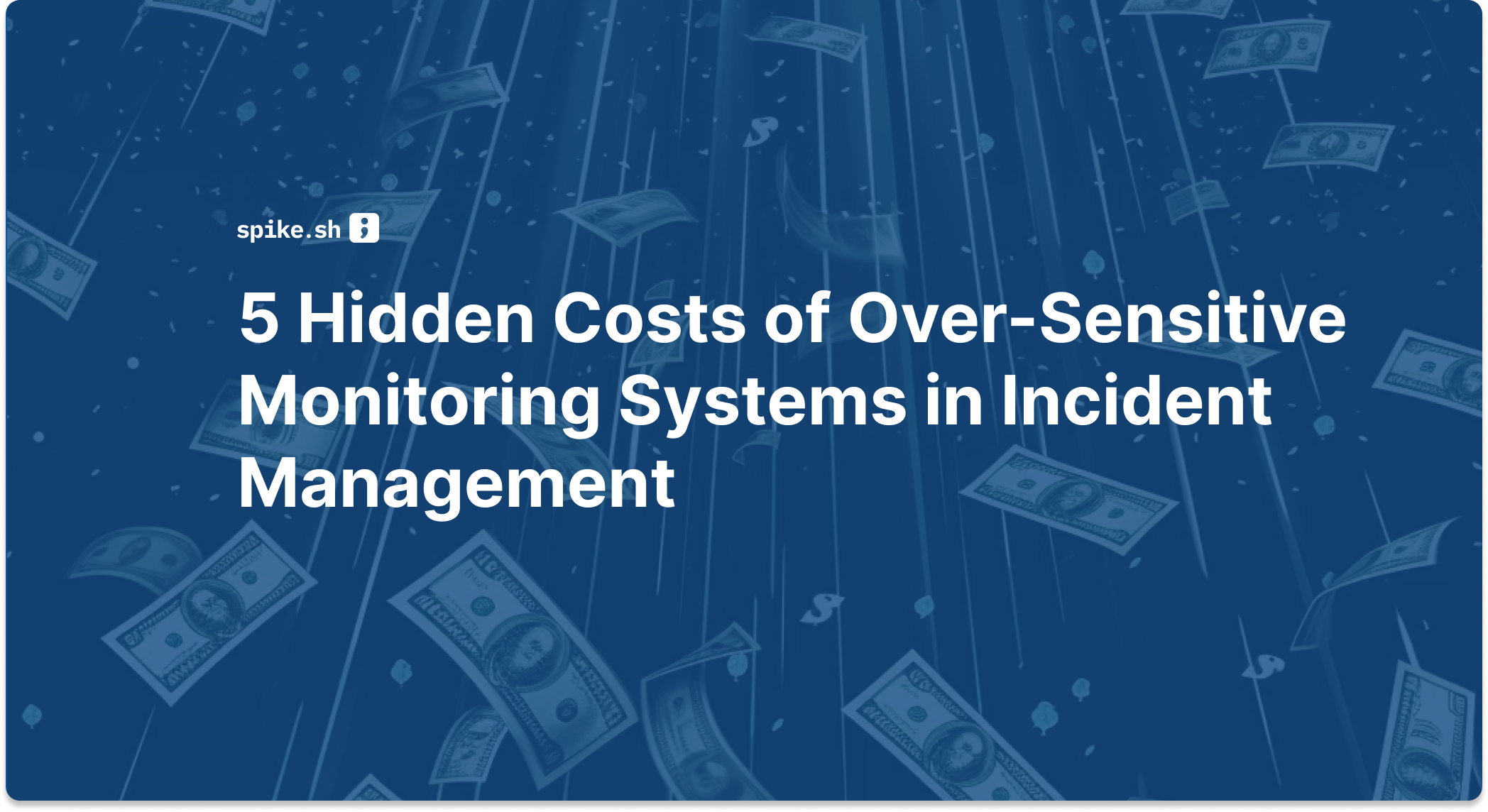Monitoring systems are invaluable for detecting incidents before they spiral into catastrophes.
However, there's a hidden danger lurking within even the most robust monitoring setups: false alarms. When systems are overly sensitive, they raise alerts for incidents that don't actually exist.
While this may seem harmless on the surface, hyper-sensitive monitoring can quietly drain time, money, and morale in ways that only become apparent over time.
This blog post delves into the hidden costs of such over-sensitive monitoring systems, highlighting why a balanced approach is essential for effective incident management.
Understanding Over-Sensitive Monitoring Systems
What exactly is an "overly sensitive" monitoring system? It’s one that alerts teams about even trivial or minor issues—not just the incidents that require intervention.
Take the example of a network security system that notifies IT staff every time an employee logs in outside of normal hours, from an unusual location, or on a new device.
While well-intentioned, this overzealous monitoring could flood the team with alarms for legitimate activities like someone working late or checking email while traveling.
The result? Wasted effort chasing down false positives instead of identifying real threats.
Hidden Costs of Over-Sensitive Monitoring Systems
The following are the hidden costs teams pay when monitoring systems sound too many false alarms.
1. Resource Drain in Incident Response
One of the first and most tangible impacts of an over-sensitive system is the drain on your resources.
Imagine your incident response team as a group of firefighters; if they’re constantly called out to false alarms, not only are they wasting water, but they might also miss a real fire.
This is exactly what happens with incident management teams—they get bogged down by numerous false alarms, diverting attention and resources from actual issues.
2. Impact on System Performance and Maintenance
When alarms are firing constantly, teams are prompted to run unnecessary diagnostic checks and optimizations in pursuit of "problems" that don't really exist.
All these extra routines disrupt normal operations and the endless changes in response to false alarms can actually degrade overall system stability over time.
It's like taking your car in for unnecessary repairs whenever the low fuel light comes on. Eventually, all that needless tinkering causes more harm than good.
3. Team Burnout and Reduced Morale
The unrelenting noise of false alarms takes a psychological toll on incident response teams.
Alert fatigue sets in as responders are bombarded with notifications. Real problems become needles in a haystack as responders struggle to separate signal from noise.
This constant distraction is profoundly demoralizing. Responders feel like firefighters in a city with broken alarms on every street.
The tide of alerts leading nowhere slowly breeds cynicism, erodes job satisfaction, and burns out personnel.
4. Erosion of Trust in Monitoring Tools
When monitoring tools continually cry wolf, stakeholders start to question their reliability.
Team members become skeptical about alerts, assuming many will be false positives.
This skepticism can be damaging, as it may lead to genuine alerts being ignored or downplayed, undermining the very purpose of monitoring.
5. Obstructed Incident Analysis and Learning
In a world where data is king, over-sensitive monitoring is like having a noisy data set—it's hard to find the insights amidst the clutter.
This noise can obscure important trends and patterns, making it difficult to learn from past incidents and improve.
Clear, actionable data is crucial, and over-alerting muddies the waters.
Strike the Right Balance
The hidden costs of over-sensitive monitoring—from wasting resources to eroding trust—highlight the importance of a calibrated, balanced approach in incident management.
As incidents continue to evolve, it is crucial to calibrate monitoring systems in a way that they alert teams to real, significant issues while minimizing the noise of false alarms.
This balance is not just a matter of efficiency; it's the cornerstone of effective incident management in an increasingly complex digital landscape.

